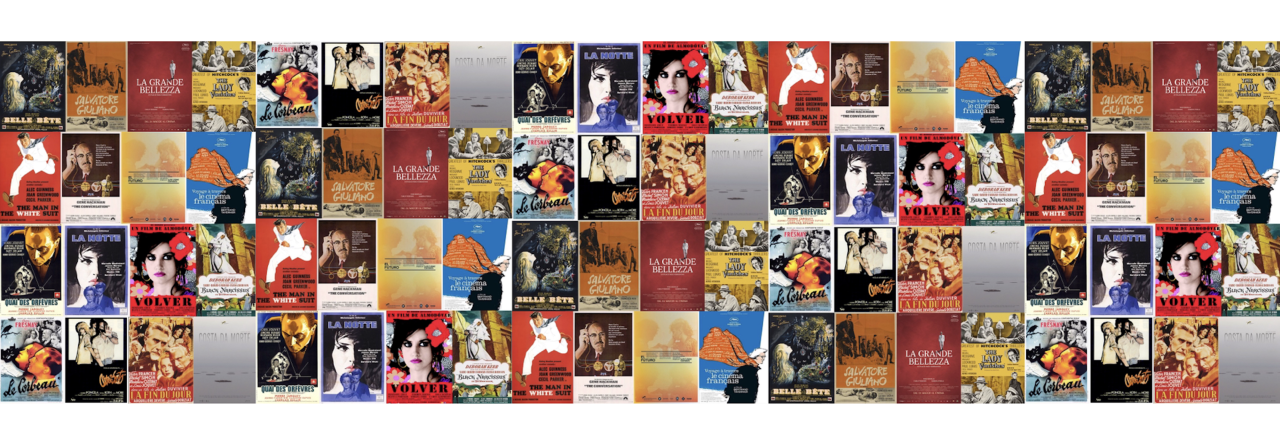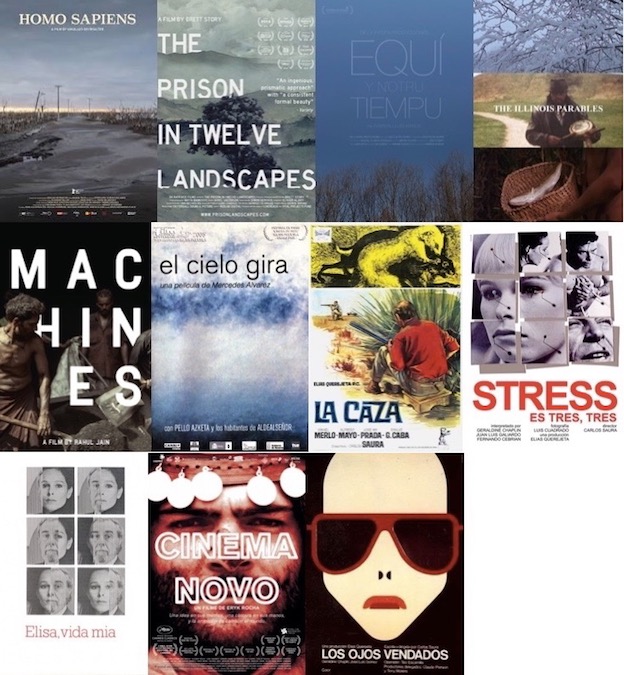
Director: Carlos Saura
Screenplay: Carlos Saura
Cast: Fernando Rey, Geraldine Chaplin, Norman Brisky, Isabel Mestres, Joaquín Hinojosa, Ana Torrent.
Synopsis: A man estranged from his family for twenty years is visited by his youngest daughter, who is escaping her own marital crisis.
The first film Saura made after Franco’s death – and only the second where he has the sole writing credit – Elisa, vida mía grew out of the director’s desire to make a film with a more personal resonance. In an interview given to Positif at the time, he said:
“There has always been in Spanish cinema a kind of fear of showing one’s sensitivity. […] I now feel liberated from a number of moral obligations, of certain social responsibilities, let’s say. Since Franco’s death, I’ve felt free of these obligations and I decided to focus on other aspects of my life which seemed essential to me.” (Brasó [1977] 2003: 47)
No longer feeling compelled to address themes that would lead to battles with the censors, Saura turned inwards, although he maintained the opaque style that requires the viewer to put in some effort. Elisa, vida mía is an introspective film: the central themes are solitude, the difficulty of sharing your life with someone, and self expression through artistic endeavour.
An avuncular Fernando Rey plays Luis, a writer/translator/teacher who twenty years earlier abandoned his family and moved to an isolated house in the countryside. On the occasion of his birthday (and in reported ill health) he is visited by his two daughters – Isabel (Isabel Mestres) and Elisa (Geraldine Chaplin) – and having not seen Elisa for a number of years, he invites her to stay with him for a few days. Elisa is considering the same course of action taken by her father several decades earlier; although no children are involved, she is struggling to make a decision about whether to leave her husband, and sees the visit as an opportunity to give herself space to consider the matter. It’s worth mentioning that divorce wasn’t legalised in Spain until 1981. Elisa is therefore aware that if she leaves, she will be in a kind of limbo (voiceover reveals that her mother – also played by Chaplin (with Ana Torrent playing Elisa’s younger self in the flashbacks/dreams) – was unable to make a new life for herself after Luis left them, and would have found it easier if he’d died) and this contributes to her general sense of aimlessness.
While Elisa is attempting to take control over her life and ‘find herself’, the question of who has control of the story is muddied from the start; the opening voiceover appears to be from the perspective of Elisa, but is spoken by Luis. The latter claims to be writing a memoir – and Elisa surreptitiously reads pages that detail Luis’s growing preoccupation with death (a preoccupation that she shares) – but the audience is privy to the fact that some of his writing is an account of the past from Elisa’s point of view. As he becomes familiar with her dilemma there’s something slightly vampiric in how he co-opts her words and her evident distress into a writing exercise for himself. There are also junctures where Saura deliberately obscures whose perspective we’re being given. For example, Elisa tells Luis about an anonymous caller who informed her that her husband was having an affair with her best friend. Elisa set out to confront her best friend, but was thwarted by the concierge telling her that the woman must be away because he hadn’t seen her for weeks. Elisa’s words stop at this point but the images show her entering her friend’s apartment and finding a putrefying corpse in the bedroom. Is this what really happened? Or is Luis’s imagination embellishing the story? That the audio during the unspoken sequence – the sound of men’s voices and a metallic clanking (which doesn’t fit with what we’re seeing) – reappears during a nightmare Luis has when his health deteriorates further (the sounds seem to relate to a meat market – we see haunches of raw meat skidding down a metal chute) suggests the latter.
Likewise, Chaplin playing dual roles causes confusion during a brief sex scene (featuring Luis and one of Chaplin’s characters) that occurs immediately after Elisa has definitively broken up with her husband. Has witnessing his daughter’s marital strife caused Luis to flashback to an erotically-charged moment from his own marriage, or is this an incestuous projection by father or daughter (the subsequent cut suggests that if the woman is Elisa, it is not meant to be taken as an event occurring in the present)? In the same interview, Saura suggests that the question of perspective in relation to this sequence ‘brings together all the central themes in the film: is this Luis’s story or Elisa’s? Does the story belong to a character who is double, half Luis, half Elisa, which in the final analysis would be me, the filmmaker?’ (p.50).
It’s a strange film. On the one hand, the doubling between father and daughter – they identify with each other because they share certain experiences and outlooks, but that identification seems partly misplaced and slightly out of alignment (there are secrets and misunderstandings) – creates an empathetic portrait of family bonds. But although the film is sympathetic to Elisa’s desire to ‘find herself’, some of her hysteria – a recurrent fantasy about being stabbed to death in the manner as befell a woman whose corpse Luis once found near the house, and her histrionic meltdown after she tells her husband that she won’t be returning home with him – seems incredibly overwrought to these modern eyes, and it is an occasion where (for me) Saura’s deliberate ambiguity is frustrating.
References:
Brasó, E. ([1977] 2003) – ‘Interview with Carlos Saura on Cría cuervos and Elisa, vida mía‘, Positif, no.194, pp.3-8, reprinted in Carlos Saura: Interviews, edited by L.M. Willem, Jackson: University Press of Mississippi.

